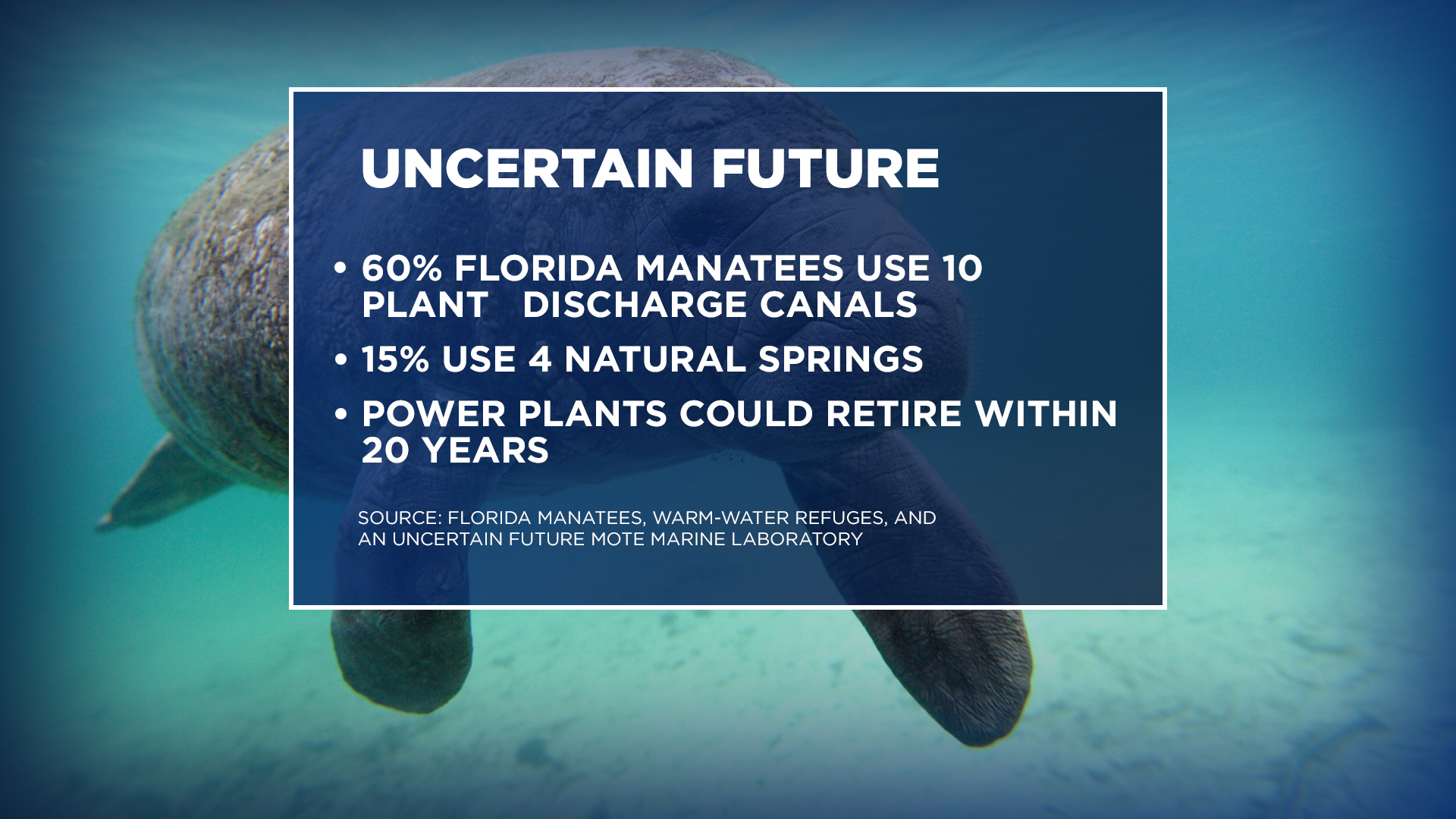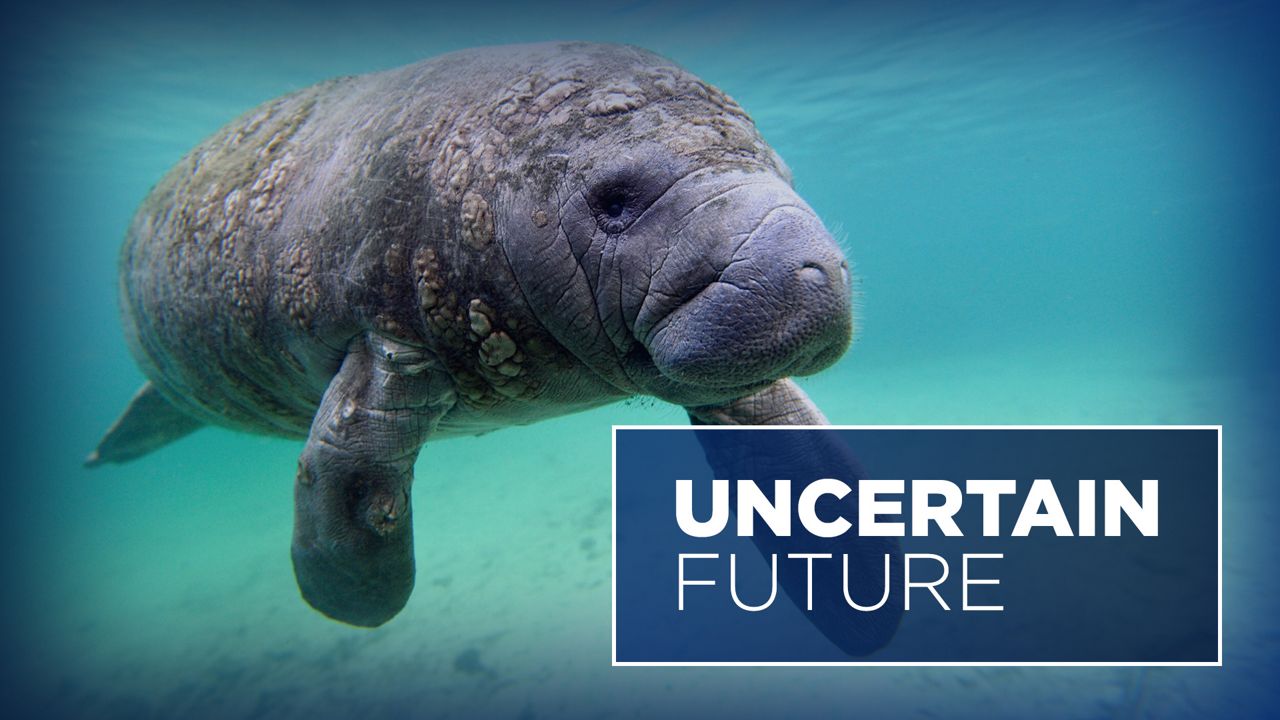TAMPA, Fla. — As Tampa Electric and other utility companies statewide try to reduce their impact on the environment with solar energy, manatee habitats and their survivability could be in jeopardy.
- Manatees at risk of losing habitats as electric companies go green
- Going green means losing artificial warm water springs
- Manatee rely on warm springs produced by power plants
That’s because “going green” means artificial warm water springs, a byproduct of cooling down power plants, would go away. This makes for an uncertain future for manatees.
During Wednesday’s cold snap, Florida Fish and Wildlife released a rescued manatee in the warm springs produced by TECO's Big Bend plant.
It was in the place called the Manatee viewing area and for good reason. Manatees flock to this location to warm up in the winter.
The problem is if power plants go by the way of retirement then there's no warm water.
Where do the manatees go?
A 2013 Mote Marine Lab study found it's not just Big Bend.
- 60% of Florida's manatees use 10 plant discharge canals
- 15% use 4 natural springs
- Power plants are also getting old and could be retired within the next 20 years.

Florida Fish and Wildlife confirmed over an email they are working on this problem.
“Staff have not yet completed the study you referenced. However, please note that the Big Bend plant is repowering one of their generating units over the next couple of years,” the email explained. “That change should extend the life of that facility and will help us continue to work on solutions for this issue.”
Time is of the essence.
The Mote report says it took 50 years for manatees to depend on the power plants. They say it'll take just as long to wean them off.
Other solutions offered by Mote's research includes:
- Buying up natural springs to convert into manatee habitats
- Removing human-made dams
- Restricting human activity near natural springs
- Experimenting with manatee relocation



